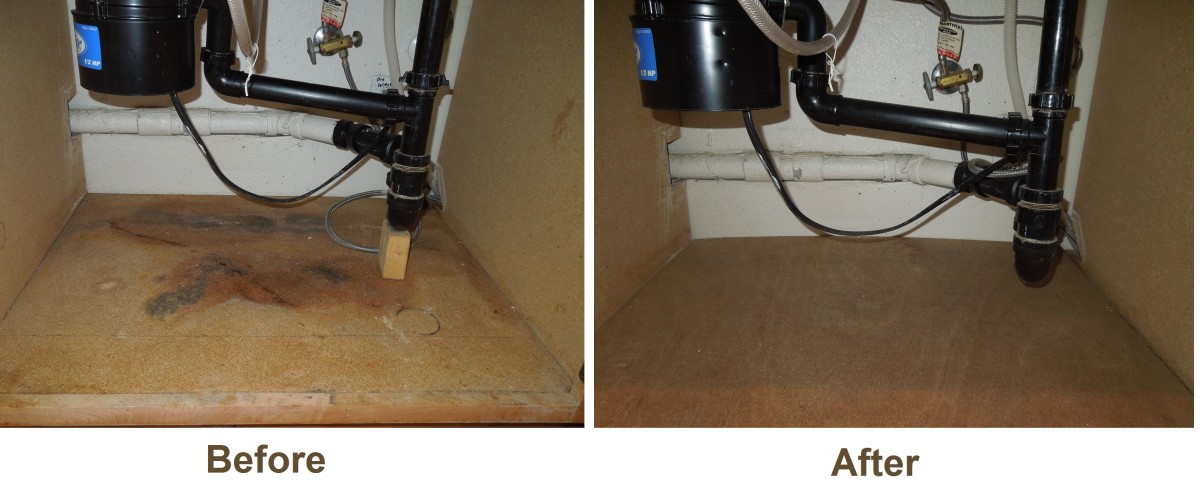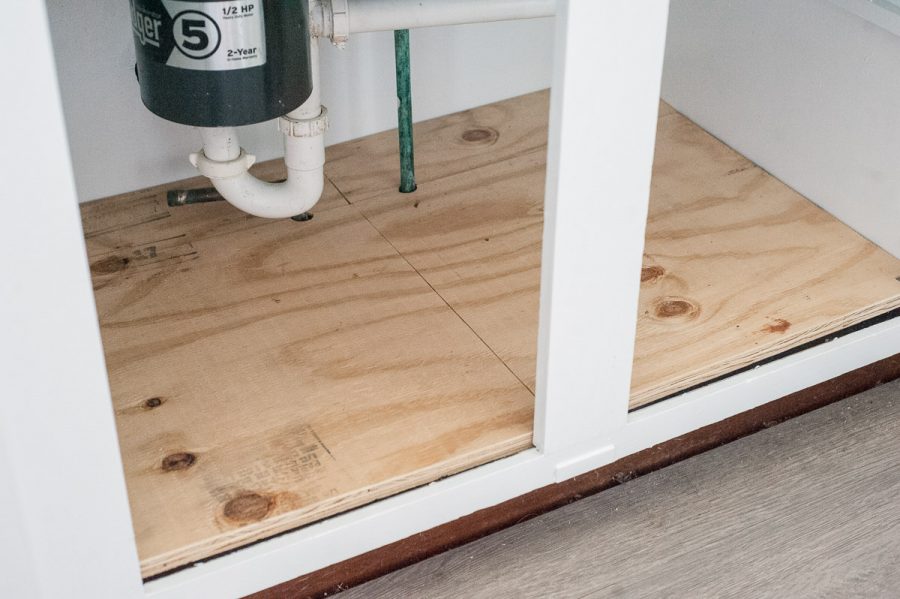Assessing the Situation: How To Replace Cabinet Under Kitchen Sink

Before embarking on your cabinet replacement journey, take a moment to evaluate the current state of your under-sink cabinet. This will help you determine the best course of action and select the perfect replacement.
Current Cabinet Condition
Start by taking a close look at your existing cabinet. Is it structurally sound? Are there any signs of water damage, such as warping or mold? Does it have any cracks or loose hinges? A thorough inspection will reveal the extent of any issues and guide your decision.
Reason for Replacement, How to replace cabinet under kitchen sink
Next, consider the reason for replacing your cabinet. Is it simply outdated and no longer meets your storage needs? Or is it damaged beyond repair? Perhaps you’re looking for a more functional or aesthetically pleasing solution. Identifying the root cause will help you prioritize your requirements for the new cabinet.
Desired Features for the New Cabinet
Now, imagine your ideal under-sink cabinet. What features are most important to you? Do you need more storage space? Are you looking for specific materials, such as moisture-resistant wood or stainless steel? Do you have a preferred style in mind? Consider the following:
Size and Dimensions
– Measure the available space under your sink carefully to determine the optimal size for your new cabinet.
– Consider the depth and height you need to accommodate your cleaning supplies, plumbing fixtures, and other essentials.
Material and Durability
– Choose a material that is resistant to moisture and wear and tear.
– Moisture-resistant wood, stainless steel, or durable plastic are excellent choices for under-sink cabinets.
Style and Aesthetics
– Select a style that complements your kitchen decor.
– Consider the overall design of your kitchen and choose a cabinet that seamlessly blends in or creates a statement piece.
Planning the Replacement

Now that you’ve assessed the situation, it’s time to plan your cabinet replacement. This involves carefully removing the old cabinet, disconnecting any plumbing and electrical components, and designing a layout for the new cabinet.
Removing the Old Cabinet
How to replace cabinet under kitchen sink – Before you start, gather the necessary tools, including a screwdriver, wrench, pliers, and a utility knife.
- Disconnect the plumbing: Turn off the water supply to the sink by turning the shut-off valve underneath the sink. Then, disconnect the water supply lines from the sink using a wrench. If the lines are made of flexible braided hoses, use pliers to loosen the nuts.
- Disconnect the drain: Disconnect the drain pipe from the sink using a wrench. If the drain pipe is connected to a garbage disposal, unplug the disposal before disconnecting the drain pipe.
- Remove the sink: Remove the screws or clips holding the sink to the countertop. Once the sink is free, carefully lift it out of the cabinet. If the sink is heavy, ask for help.
- Remove the cabinet: Remove any screws or nails holding the cabinet to the wall. If the cabinet is attached to the countertop, detach it by removing the screws or clips.
- Remove the countertop: If the countertop is attached to the cabinet, you’ll need to remove it as well. This may require a helper.
Disconnecting Plumbing and Electrical Components
Safety is paramount when working with plumbing and electrical components. Follow these steps to ensure a safe disconnection.
- Turn off the water supply: Always turn off the water supply to the sink before disconnecting any plumbing components. This will prevent water from flooding the area.
- Turn off the power: If there are electrical components connected to the cabinet, such as a garbage disposal or a light fixture, turn off the power at the breaker box before disconnecting them.
- Use appropriate tools: Use the correct tools for the job. For example, use a wrench to loosen nuts and a screwdriver to remove screws.
- Be careful with sharp edges: Be aware of sharp edges on plumbing components and use caution when handling them. Wear gloves to protect your hands.
Designing the Layout
Planning the layout for the new cabinet is crucial for maximizing space and ensuring proper access to plumbing and electrical components.
- Measure the space: Measure the width, depth, and height of the space where the new cabinet will be installed.
- Consider plumbing and electrical access: Ensure that the new cabinet provides easy access to plumbing and electrical components. If necessary, adjust the layout to accommodate these components.
- Plan for storage: Determine what you need to store in the cabinet and design a layout that maximizes storage space.
- Consider the style: Choose a cabinet style that complements the rest of your kitchen.
Installing the New Cabinet

Now that you have removed the old cabinet and prepared the space, it’s time to install the new one. This process involves securing the cabinet to the wall, connecting plumbing and electrical components, and ensuring proper functionality.
Securing the Cabinet to the Wall
Before attaching the new cabinet, it’s crucial to ensure the wall is sturdy and can support its weight. You can use a stud finder to locate wall studs, which provide the most secure attachment points.
- Locate Wall Studs: Use a stud finder to locate the wall studs behind the cabinet’s intended position. Mark the stud locations with a pencil or tape.
- Attach Brackets: If your cabinet comes with mounting brackets, install them on the back of the cabinet, aligning them with the marked stud locations. Use screws that are long enough to securely fasten the brackets to the wall studs.
- Level the Cabinet: Before fully securing the cabinet, use a level to ensure it’s perfectly horizontal. Adjust the cabinet’s position as needed until it’s level.
- Secure the Cabinet: Once the cabinet is level, attach it to the wall using the screws provided. Ensure the screws are fully tightened and the cabinet is securely attached.
Connecting Plumbing Components
Connecting the plumbing components requires careful attention to avoid leaks and ensure proper water flow.
- Install the Sink: If the new cabinet includes a sink, install it according to the manufacturer’s instructions. This typically involves attaching the sink to the countertop and securing it with clamps or brackets.
- Connect the Drain: Connect the drain pipe from the sink to the existing drain line under the sink. Use appropriate plumbing tape or sealant to prevent leaks. Ensure the drain pipe is properly secured to prevent it from coming loose.
- Connect the Water Supply: Connect the hot and cold water supply lines to the sink’s faucets. Use appropriate fittings and plumbing tape or sealant to ensure a secure and leak-proof connection.
Connecting Electrical Components
If the new cabinet includes electrical components like a garbage disposal, ensure you have the necessary electrical connections.
- Install the Garbage Disposal: If your new cabinet includes a garbage disposal, install it according to the manufacturer’s instructions. This typically involves connecting the disposal to the sink drain and securing it to the cabinet.
- Connect the Electrical Wiring: Connect the electrical wiring for the garbage disposal to a dedicated circuit. Ensure the wiring is properly grounded and connected to a GFCI outlet for safety.
Installation Checklist
After installing the new cabinet, it’s essential to verify its functionality and ensure a secure and leak-proof installation.
- Check for Leaks: Turn on the water supply and check for leaks around the sink, drain, and water supply lines. Tighten any loose fittings or connections as needed.
- Test the Drain: Run water into the sink and ensure it drains properly. Check for clogs or blockages in the drain pipe.
- Test Electrical Components: If the new cabinet includes electrical components, test their functionality. For example, run the garbage disposal and ensure it operates correctly.
- Inspect the Cabinet’s Stability: Check that the cabinet is securely attached to the wall and doesn’t wobble or move. Tighten any loose screws or brackets as needed.
Replacing that gross cabinet under your sink is totally a DIY project, but you might wanna check out a one bedroom apartment ottawa west if you’re not into that kinda thing. Maybe you can find one with a fancy kitchen that doesn’t need any fixing up.
But if you’re into saving money and getting your hands dirty, it’s totally doable! Just make sure you have the right tools and you’ll be chillin’ with a fresh kitchen in no time.
Replacing the cabinet under your kitchen sink is a total DIY project, but you gotta make sure you pick the right paint for it! You can find some killer color inspo for metal cabinets here , and then you’ll be all set to tackle that leaky faucet or whatever else is giving you a headache in your kitchen!
